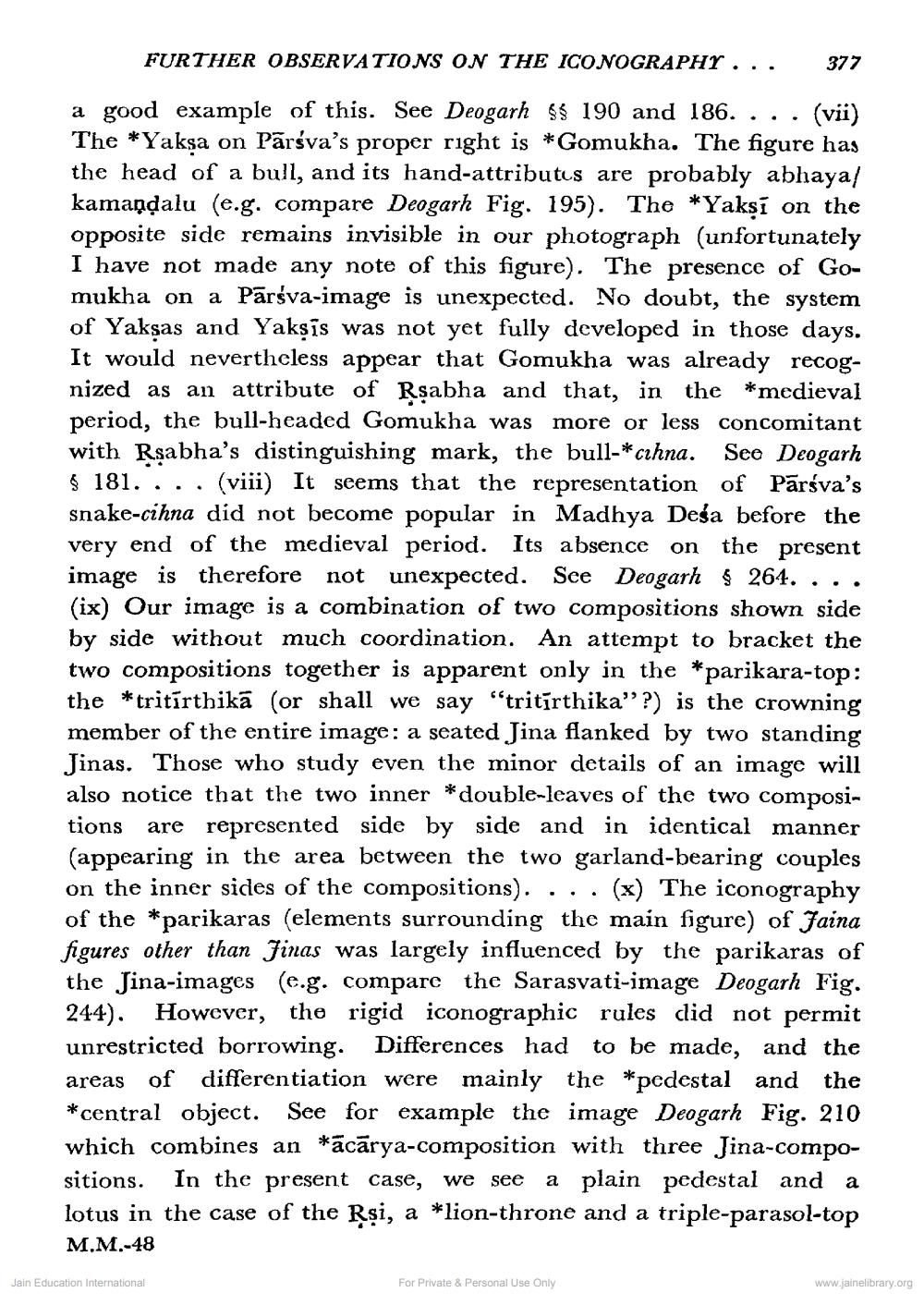________________
FURTHER OBSERVATIONS ON THE ICONOGRAPHY ...
377
a good example of this. See Deogarh $$ 190 and 186. . . . (vii) The *Yaksa on Pārsva's proper right is *Gomukha. The figure has the head of a bull, and its hand-attributes are probably abhaya/ kamandalu (e.g. compare Deogarh Fig. 195). The *Yakşí on the opposite side remains invisible in our photograph (unfortunately I have not made any note of this figure). The presence of Gomukha on a Pārsva-image is unexpected. No doubt, the system of Yaksas and Yaksīs was not yet fully developed in those days. It would nevertheless appear that Gomukha was already recognized as an attribute of Rşabha and that, in the *medieval period, the bull-headed Gomukha was more or less concomitant with Rşabha's distinguishing mark, the bull-* cihna. See Deogarh $ 181. . . . (viii) It seems that the representation of Pārsva's snake-cihna did not become popular in Madhya Desa before the very end of the medieval period. Its absence on the present image is therefore not unexpected. See Deogarh $ 264. ... (ix) Our image is a combination of two compositions shown side by side without much coordination. An attempt to bracket the two compositions together is apparent only in the *parikara-top: the *tritírthikā (or shall we say "tritīrthika'?) is the crowning member of the entire image: a seated Jina flanked by two standing Jinas. Those who study even the minor details of an image will also notice that the two inner *double-leaves of the two compositions are represented side by side and in identical manner (appearing in the area between the two garland-bearing on the inner sides of the compositions). ...(x) The iconography of the *parikaras (elements surrounding the main figure) of Jaina figures other than finas was largely influenced by the parikaras of the Jina-images (e.g. compare the Sarasvati-image Deogarh Fig. 244). However, the rigid iconographic rules did not permit unrestricted borrowing. Differences had to be made, and the areas of differentiation were mainly the *pedestal and the *central object. See for example the image Deogarh Fig. 210 which combines an *ācārya-composition with three Jina-compositions. In the present case, we see a plain pedestal and a lotus in the case of the Rsi, a *lion-throne and a triple-parasol-top M.M.-48
Jain Education International
For Private & Personal Use Only
www.jainelibrary.org




